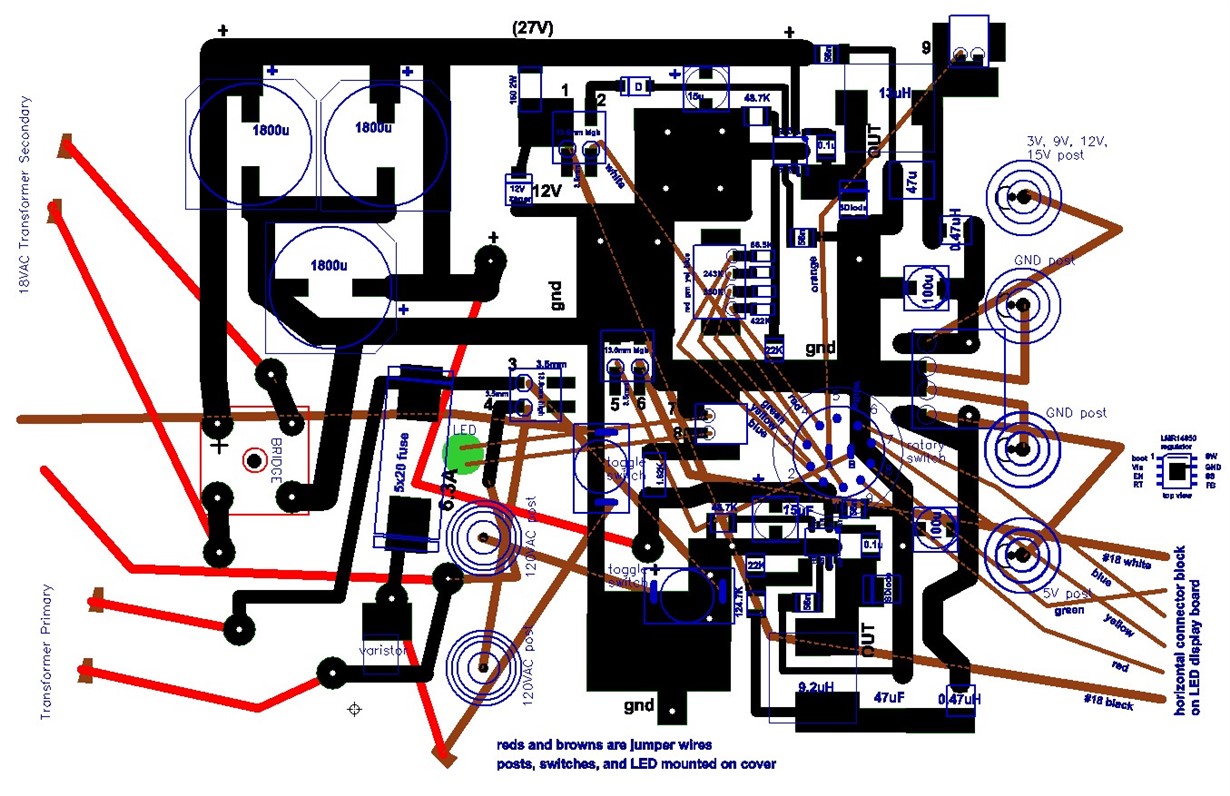I am building a dual hobbyist power supply with two LMR14050s, one for a fixed 5 volt, the other for a switchable 3V, 9V, 12V, and 15V (schematic attached.) I have run into a few problems, mostly my own doing that were rectified, but now have one that has me baffled. For the first time I applied loads to the output: a 10 ohm resistor on the 5V and 50 ohms on the selected 15 volt output. (My intention was to measure the heat sink temperature rises.) With the load attached the output voltages dropped: to a few mV from 4.99V for the 5V output, and to about 45mV from 15.12V for the 15 volt output . When the loads were removed the output voltages returned to spec. I went through this process about five times to prove I wasn't dreaming. Any ideas why????
-
Ask a related question
What is a related question?A related question is a question created from another question. When the related question is created, it will be automatically linked to the original question.


